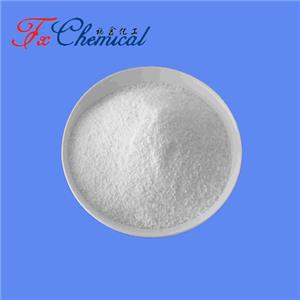
Rutinose NEW
| Price | Get Latest Price | |
| Package | 1mg | 25mg |
| Min. Order: | 1mg |
| Supply Ability: | 20TONS |
| Update Time: | 2025-08-07 |
Product Details
| Product Name: Rutinose | CAS No.: 90-74-4 |
| EC-No.: 202-014-4 | Min. Order: 1mg |
| Purity: 99% | Supply Ability: 20TONS |
| Release date: 2025/08/07 |
Rutinose (6-O-α-L-Rhamnosyl-D-glucose) is a disaccharide sugar primarily known as the glycosidic component of the flavonoid glycoside Rutin (quercetin-3-O-rutinoside). Unlike common sugars, its applications are highly specialized and indirect, stemming almost entirely from its role as part of bioactive flavonoid structures found in plants. Here's a breakdown of its significance and applications:
Natural Occurrence & Structural Role:
Hesperidin (hesperetin-7-O-rutinoside) - prominent in citrus fruits.
Narirutin (naringenin-7-O-rutinoside) - also in citrus.
Quercitrin (quercetin-3-O-rhamnoside) is not a rutinoside; it contains only rhamnose. True rutinosides contain the rutinose disaccharide.
Core Component of Rutin: Rutinose is the sugar moiety attached to the flavonol quercetin at the 3-position in Rutin. Rutin is abundant in plants like buckwheat, asparagus, citrus fruits (especially the rind and albedo), apples, and tea.
Component of Other Glycosides: Rutinose is also found in other flavonoid glycosides like:
Indirect Applications through Rutin and Other Rutinosides:
The primary "application" of rutinose lies in its contribution to the properties and bioactivities of the flavonoid glycosides it forms part of:Dietary Supplements: Marketed for vascular health, antioxidant support, and inflammation reduction.
Pharmaceuticals: Included in some medications (e.g., for hemorrhoids, varicose veins, capillary fragility) primarily in Europe and Asia.
Cosmeceuticals: Used in skincare products for its antioxidant and purported anti-aging properties.
Potent Antioxidant Activity: Scavenging free radicals, protecting cells from oxidative stress.
Vascular Protective Effects: Strengthening capillaries, reducing permeability, improving microcirculation (rutin's primary traditional use).
Anti-inflammatory Activity.
Potential Anti-cancer Properties.
Potential Benefits for Metabolic Syndrome.
Solubility & Stability: The hydrophilic rutinose sugar moiety significantly increases the water solubility of the hydrophobic flavonoid aglycone (like quercetin, hesperetin, naringenin). This enhances absorption and bioavailability compared to the free aglycone. It can also influence stability.
Bioavailability & Metabolism: Rutinose affects how the flavonoid is absorbed and metabolized. Enzymes (like intestinal α-rhamnosidases and β-glucosidases) hydrolyze rutinose to release the aglycone (e.g., quercetin) and the monosaccharides (rhamnose & glucose) in vivo. This controlled release influences the flavonoid's biological effects.
Biological Activities (Attributed to the Whole Molecule): Rutin and other rutinosides are valued for their:
Commercial Products: Rutin (containing rutinose) is extracted on a large scale (mainly from buckwheat or sophora japonica buds) and used in:
Biochemical & Microbiological Research:
Enzyme Substrate: Rutinose serves as a specific substrate to study the activity and kinetics of enzymes like α-L-Rhamnosidases and β-D-Glucosidases, which are crucial for breaking down rutinosides in plants, microbes, and the digestive system.
Microbial Metabolism: Studying how gut microbiota or specific fungi/bacteria metabolize rutinosides (like rutin or hesperidin) involves understanding the hydrolysis of rutinose.
Niche Chemical Synthesis:
Specialized Synthon: Chemically synthesized rutinose can be used as a protected glycosyl donor to synthesize specific flavonoid rutinosides or other glycoconjugates for research purposes (e.g., creating analogs to study structure-activity relationships). This is a complex, specialized area of carbohydrate chemistry.
Company Profile Introduction
You may like
Recommended supplier
| Product name | Price | Suppliers | Update time | |
|---|---|---|---|---|
| $0.00/1G |
VIP5Y
|
WUHAN FORTUNA CHEMICAL CO., LTD
|
2023-02-17 | |
| $0.00/25KG |
VIP6Y
|
Hebei Mujin Biotechnology Co.,Ltd
|
2023-08-08 | |
| $10.00/1KG |
VIP7Y
|
Hebei Chuanghai Biotechnology Co., Ltd
|
2024-11-13 | |
| $0.00/10G |
VIP5Y
|
WUHAN FORTUNA CHEMICAL CO., LTD
|
2023-02-11 |
- Since: 2006-04-03
- Address: Room 2015, No.2 Building Kaixin Mansion







 China
China